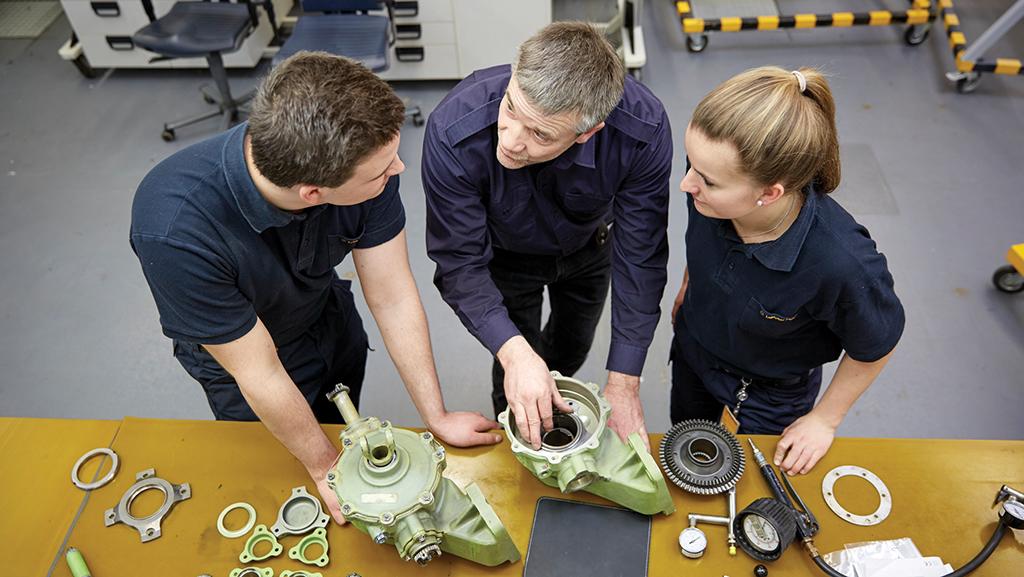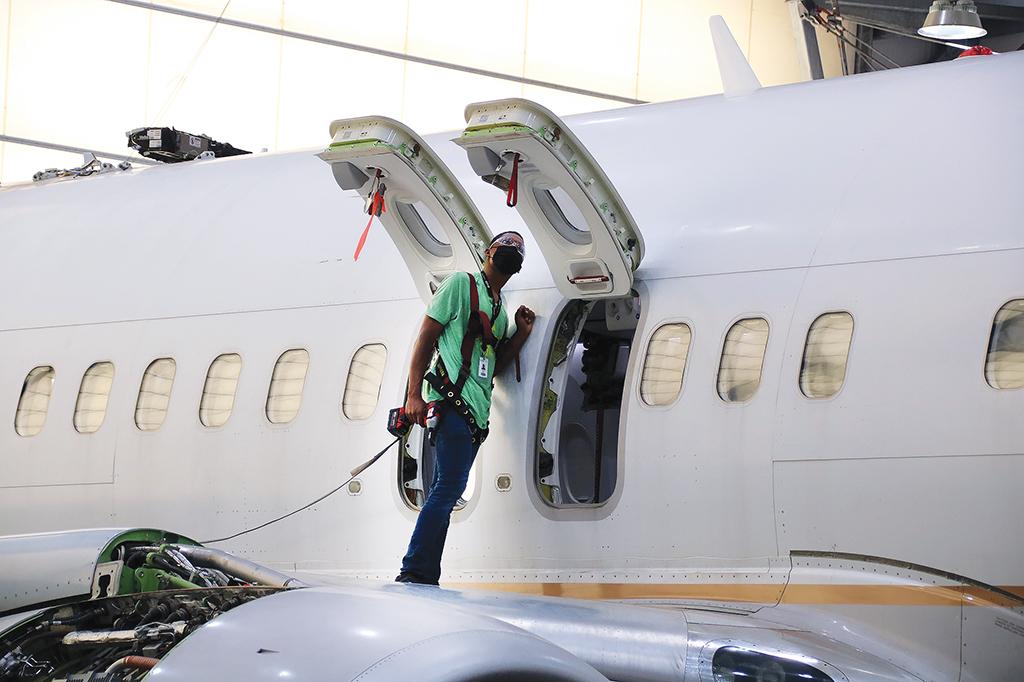
Lufthansa Technik has introduced a Knowledge Transfer Initiative to pass down on-the-job knowledge from experienced technicians.
The aftermarket has moved solidly into recovery mode following the turmoil of the COVID-19 pandemic, but relief is not coming anytime soon for the impending aviation maintenance technician shortage.
Boeing’s latest Pilot and Technician Outlook forecasts demand for 610,000 new maintenance technicians over the next decade. While at first glance this number looks lower than the OEM’s projections for pre-pandemic levels, Boeing is no longer incorporating demand for business aviation and civil helicopter technicians as well as technician needs in the Russia and Central Asia region. The Aviation Technician Education Council (ATEC) calculated Boeing’s previous forecast totals without these segments and, according to Executive Director Crystal Maguire, technician demand continues to increase.
The Boeing report forecasts that North America will need 134,000 new technicians over the next decade. However, Maguire says U.S. growth in certificated mechanics is not keeping up with the necessary demand to meet these figures. ATEC reports there was a 30% drop in the FAA’s new mechanic certifications in 2020; last year, there was only a 2.2% increase.
“We hoped it was going to be a bubble this year because people put off getting certified because testing wasn’t available or they couldn’t graduate [during the pandemic],” Maguire says. “In reality, we didn’t even make up for last year’s drop. We saw a 33% increase from the previous year, meaning we didn’t make up the gap, let alone continue the trajectory that we were on before. We’ve lost our momentum, and we have to catch up.”

Maguire says Part 147 school enrollments and graduations are also not seeing enough growth. She notes that these numbers have remained relatively flat. “It’s still going up, but it’s not increasing as much as it was,” she says. “As we were moving into the pandemic, we were averaging around 3% [growth in enrollments]—which is still not great and wasn’t going to meet demand anyway—but now we’re looking at closer to around 2%.”
In addition to stagnant numbers of new graduates coming to the MRO industry from schools, Maguire says ATEC has seen a decrease in the number of new technicians receiving their certifications from the military or from civilian on-the-job training, both of which were possibly delayed due to the pandemic.
Reverberations from the pandemic have also played a role in shifting attitudes that complicate hiring for MROs. According to Simon Chee, assistant director career services, alumni and corporate relations at Embry-Riddle Aeronautical University (ERAU) Asia, the pandemic changed the mentality of many potential technicians.
“Students are stepping away from the engineering field and the aviation industry,” Chee says. “The younger generation is looking to join industries that are ‘pandemic proof,’ which may not be where their passion is. Companies need to build confidence back into the younger generation by working closely with educational institutions on building a solid and secure career pipeline for fresh graduates.”
In Singapore, Chee says existing MRO industry initiatives such as career fairs, company visits, scholarships and internship programs are not enough to fill the pipeline—particularly since Boeing forecasts the Asia-Pacific region will need the largest portion of new maintenance technicians (250,000) over the next decade. He suggests aviation salaries in Singapore are not keeping up with industries that provide better security, such as banking and finance, nor with technician salaries in the U.S. and Europe.
MROs are also seeing the impact of the pandemic in Europe, where Boeing predicts 120,000 new technicians will be needed through 2041. “Compared to other sectors, the MRO sector has to make a renewed effort to build trust as an employer and reposition itself on the employee market due to the far-reaching consequences of the crisis,” a Lufthansa Technik (LHT) representative says.
“The current trend toward academ-ization is also minimizing the current generation’s focus on attractive apprenticeship positions,” the representative adds. “It is therefore particularly relevant to externalize target group-specific marketing measures to meet the changed needs of the new generation.” At LHT, these include launching marketing initiatives via social media networks to reach Generation Z. The MRO also targets efforts toward those who want to change companies, retrain or reenter the workforce, such as after maternity leave.
One major challenge highlighted by Boeing’s report was the issue of “juniority across the workforce,” in which senior-level knowledge will need to be passed down to new technicians as established workers—who average more than 50 years old in the U.S.—continue to retire over the next decade.
LHT is addressing this issue through a new Knowledge Transfer Initiative introduced last year, which includes various tools and methodologies to secure on-the-job wisdom and pass it down to newer technicians. The MRO has mapped out knowledge, roles and tasks, and it is deploying measures such as video recordings, wiki documentation and the “generation-tandem process,” where older and younger colleagues work together.
In the U.S., AAR is feeling a similar crunch. “AAR, like, I think, everyone in the industry, is struggling to retain and find skilled talent with greater than five years of heavy jet experience,” says Ryan Goertzen, vice president of workforce development. He cites a 2020 U.S. Government Accountability Office report, which found that the average age of the MRO workforce was 54 and that 50% of certificated technicians were between 50 and 70 years old.
Goertzen says AAR is actively focused on recruiting new talent through various initiatives, including workforce pipeline programs that target transitioning service members and students. “Our strategy is to accelerate learning through the classroom and on-the-job experience,” he says. “This allows AAR to focus more locally to develop this pipeline from high school to AAR and beyond.
According to Goertzen, the pandemic also impacted peoples’ attitudes about the geographic location where they want to work. “There is a shift to growing talent locally, as the desire to move is less today than before the pandemic,” Goertzen says.
AAR worked with state and federal legislators to use grant money toward building a localized workforce pipeline model at its Rockford, Illinois, facility, where it managed to nearly double the size of its workforce during the pandemic. “In Miami, we have to take a similar approach, as the cost of housing has become a significant factor in moving,” Goertzen adds.





